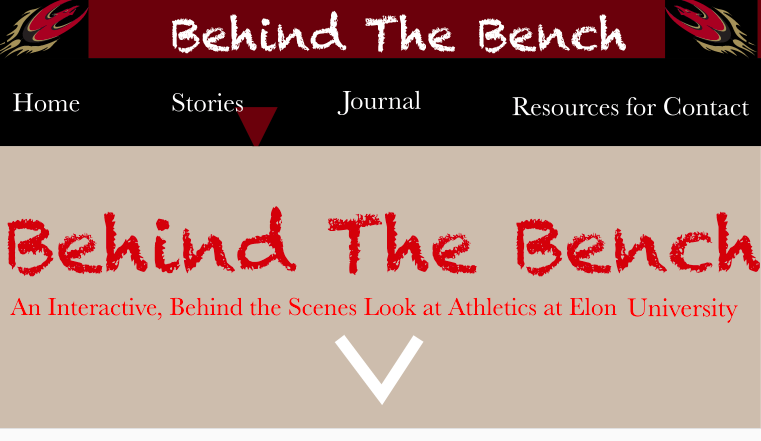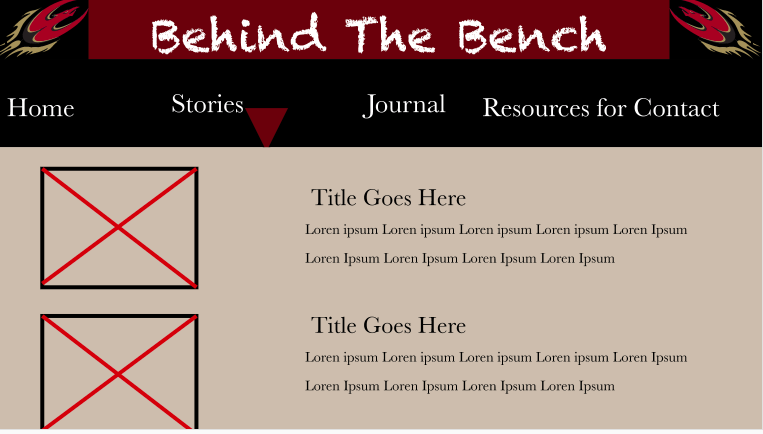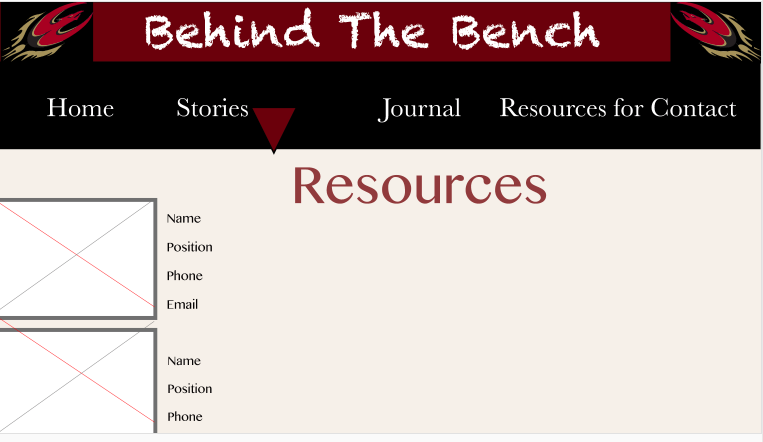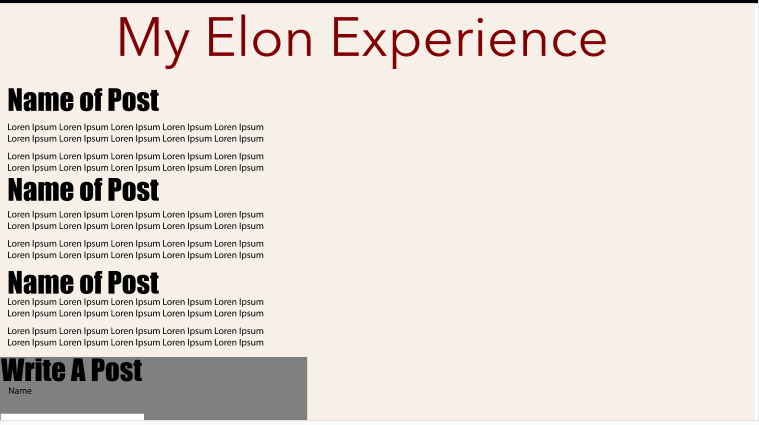Behind the Bench came into existence as a combination of three of my main passions- sports, writing, and content creation. This project was originally inspired by other sports-themed blog sites such as The Ringer and The Athletic. I originally designed this site for current student athletes looking for guidance on issues that were unique to them, but as the project grew I also began to focus on writing and designing for both prospective student athletes and younger sports fans who maybe dreamed about playing at a collegiate level someday, and wanted to learn more about what the process was like.
I conducted research and found that student athletes face a unique set of needs, including that they transfer more often than non-athletes and academic graduation rates can be lower than that of non-athletes (Ferris 2004). Another study suggested that athletes have unique needs because they had to balance dual responsibilities of between being an athlete and being a student, and for many that was difficult to balance. Other unique needs that athletes faced included pressure to win, pressure to get playing time, physical health issues (such as an injury), and the loss of the “star” status many collegiate athletes held while in high school (Pritchard 2005). I found this was an audience that had unique needs, and was is important for them to be in contact with those best served to help them, whether that help came in the form of planning out how best to manage academic and athletic responsibilities or preparing athletes for the possible next step of playing professionally.
My target audience for this project was current collegiate athletes, and secondary audiences included prospective college students and younger athletes wishing to learn more about the process. I used several different types of technology for this project, including Adobe Illustrator to make graphics, Adobe After Effects to make a motion graphic, Adobe XD to design a prototype for this site, Ceros to add a layer of interactivity to my content, and WordPress to host my site and structure all my content together into a complete and functional webpage. I also used the plugins HP5 and Quiz Cat to design the games on the activities page.
My Production Process
It all started with a sketch

I made this sketch at the beginning of the project to try and map out what the site might look like to achieve my goals. At the beginning of this project, I was trying to find the ideal balance between designing this site to be as informative as I could to my target audience while achieving my personal goals of showcasing my skills in writing, conducting interviews, and creating graphics and videos. My original sketch for Behind the Bench envisioned a platform where interviews were conducted with athletes, and their stories were told through a mixture of written text and videos to keep viewers engaged throughout a long form story.
This project was divided into six “sprints”- two week periods where I set goals for myself to try and break down a large project into more manageable chunks. During our “Sprint 0”- a pre-production sprint, I scheduled interviews, practiced my video editing skills, wrote interview scripts, and practiced embedding content into WordPress. During Sprint 1, I completed my first interviews and designed a prototype for my website, which can be seen here
Through the two sprints, everything was going relatively smoothly. I was putting interviews together and had a good idea of how I was going to incorporate them into the site. Then I ran into trouble.
The Coronavirus pandemic forced Elon to close at Spring Break, meaning I would have to finish the remainder of the project from home, and rely on platforms like Skype and Zoom to finish my interviews. Working 700 miles away from campus posed a number of challenges, and I realized I was going to have to make adjustments to my project. It was the first major roadblock I had encountered.

My New Process

The original target audience of Behind the Bench was current and prospective student athletes at Elon University, and that was reflected in the original color scheme and logo for the site, as well as the people I had interviewed. Being away from Elon would mean rethinking who my target audience would be and I began to shift the project away from Elon athletes toward current and prospective college athletes as a whole. I interviewed personal connections who had played a sport while in college, and this was helpful because it provided the prospective of someone who had been an athlete at a smaller college and had a different experience.
During Sprint 2, I conducted some more interviews- two in person and two more online. I created a motion graphic and some more of the graphics for my site as well. I first created a storyboard seen below, then designed the graphics in Adobe Illustrator and imported them to Adobe After Effects to animate them. This motion graphic can be seen at the top of the activities page.
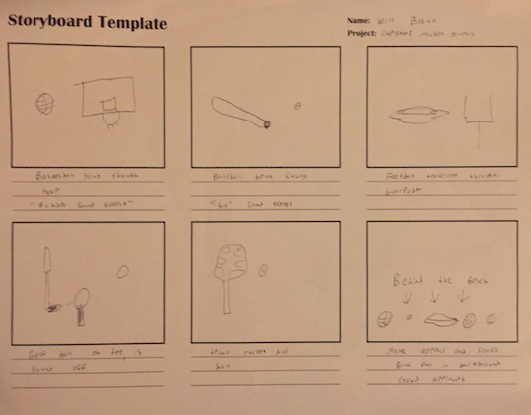
By the beginning of Sprint 3, I had completed the interviews, and I transcribed them into a 15 page document, where I searched for common themes that could tell a story about their experiences. I began to put my site together during this sprint by purchasing a domain name and selecting a WordPress theme. I wrote drafts of three stories based on the questions I had asked and the answers I received, with the help of additional online research articles. I used this information to write the stories on mental health in college athletes, post-grad career information, and navigating the recruitment process. My goal was to take the video footage I had from the interviews and edit them together for each story to enhance the multimedia experience, but then near the end of Sprint 3 I ran into another major roadblock.

At this point of the project, being at home was beginning to cause major problems. I found that my computer was too small to handle certain large video files and video editing software, and I did not have access to the larger lab computers on Elon’s campus. Furthermore, I could not get onto campus to take additional B-roll shots and photographs to add to the videos. I realized I was going to have to improvise, and I decided to replace the video portion of my project with interactive graphics.
In Sprint 4, I used a software program called Ceros to create an interactive infographic on how long the average professional career lasts in five major U.S sports. I started by researching these statistics, designing graphics in Adobe Illustrator, and importing them into Ceros to make them interactive. I used Ceros to make the graphics clickable, and I redesigned the pop-up window that opens each time a graphic is clicked to make the windows larger and more user friendly. I used the same method to create the “A Day in the Life of an Athlete” story by taking the information my interviews had provided me and figuring out how to turn it into a story. I designed the graphics in Adobe Illustrator and imported them into Ceros to make them interactive.
Finally, I created an activities page in an effort to make the site more appealing for younger viewers interested in learning more about what behind the scenes life was like for their favorite college athletes. The activities page featured a motion graphic I had designed earlier in the project (which I had originally planned to put on the home page), the interactive story, and a quiz and word search I made using the Quiz Cat and H5P plugins respectively.
During Sprint 5, I edited the existing content of my site and added in stock photographs from unsplash.com. I added content into my footer and made sure the layout of the site was navigable and user friendly.
References and Contributors
I would like to thank Professor William Moner and the other students in my capstone class- Michael Hemstreet, Ashleigh Kimble, London Thompson, Rakhia Bass, Victoria Murrell, Hyllary Bell, Tehya Jackson, Amonie Moore, and Felecia Wilkins for their help and feedback that they gave me throughout this project. I would like thank Eric Hall, Paul Hvozdovic and all the athletes that spoke with me about their experiences for this project. Below is a list of sources I cited when I was gathering information for this project.
Some of my biggest takeaways I learned from doing this project included exactly how much a project like this will change from beginning to end. As I learned throughout designing this site, circumstances change and the ability to come up with a creative solution to a roadblock is needed. I also learned the importance of having a well-thought out process that you carefully plan out before jumping in to begin creating a site like this. It is important to take a large project like this and break it down into smaller, more manageable goals that can reasonably be completed in two weeks. I believe following the sprint model was very helpful toward reaching my final objective. Finally, I learned the importance of constantly getting feedback from others throughout the design process to ensure that the final product is as high-quality and user friendly as possible, and you can always go back and edit accordingly based on the feedback of your peers.
Click here to learn more about me
Miles, Christopher M and Sudano, Laura E, (2016). Mental Health Services in NCAA Division I Athletics: A Survey of Head ATCs. Sports Health, A Multidisciplinary Approach. 9(3) 262-267 https://doi.org/10.1177/1941738116679127
Carr, Chris, and Davidson, Jamie (n.d) Mind Body and Sport, the Psychologists Perspective. NCAA.org http://www.ncaa.org/sport-science-institute/mind-body-and-sport-psychologist-perspective
Harris, Jasmine (2018, October 9). It’s naive to think college athletes have time for school. the conversation.com. https://theconversation.com/its-naive-to-think-college-athletes-have-time-for-school-100942
Research on Student-Athlete Transfers. NCAA.org http://www.ncaa.org/about/resources/research-student-athlete-transfers
NCAA Recruiting Facts. NCAA.org https://www.ncaa.org/sites/default/files/Recruiting%20Fact%20Sheet%20WEB.pdf
Average Career Length in Years. inforgram.com. https://infogram.com/sports-with-average-yearly-incomeaverage-career-length-1gxop47k0j1dpwy
Hass-Hill, Colin (2020, April 30) What To Know About The NCAA Board Of Governors’ Recommendations For Name, Image And Likeness Reform. elevenwarriors.com. https://www.elevenwarriors.com/college-sports/2020/04/113797/what-you-should-know-about-the-ncaas-board-of-governors-supporting-name-image-likeness-reform
Want to Transfer?. NCAA.org. http://www.ncaa.org/student-athletes/current/want-transfer

